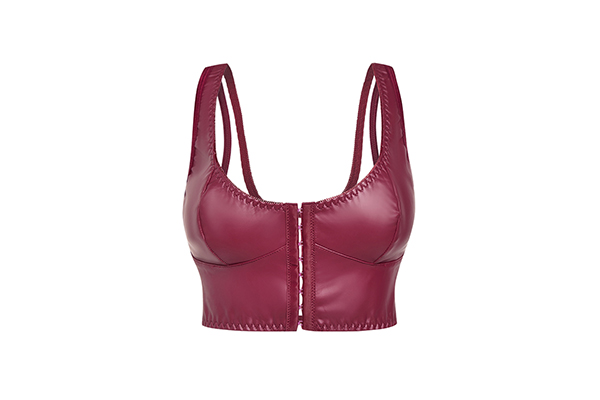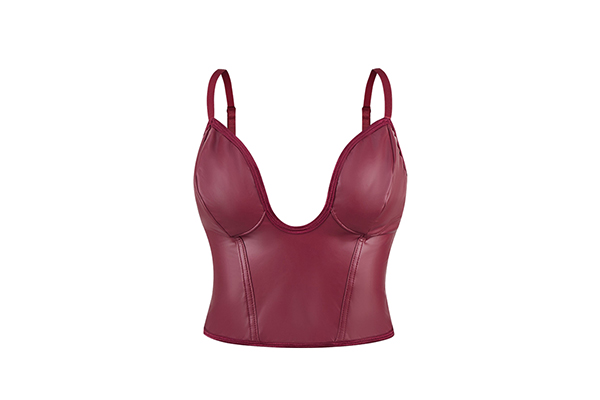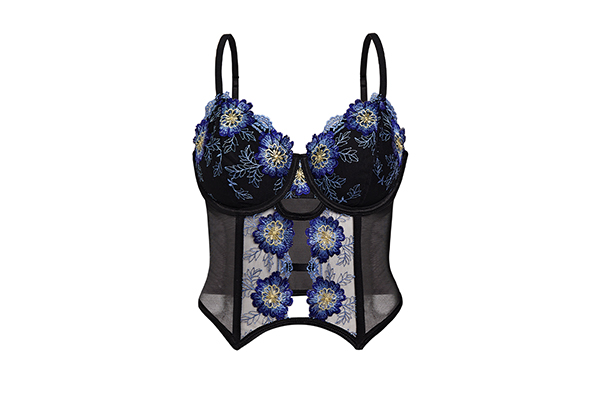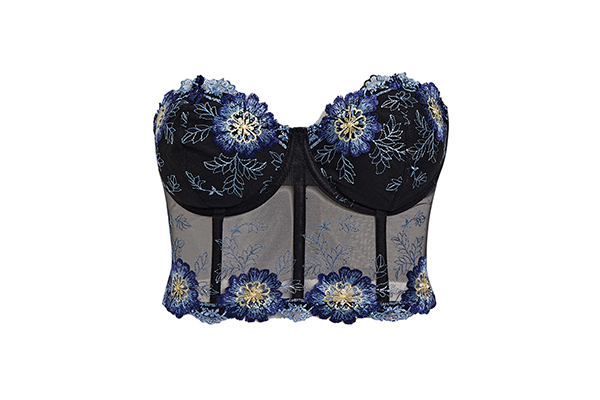How does the corset support structure provide chest support and stability?
Release Time : 2025-06-03
The support structure of the corset is the core of achieving chest support and stability. Its design principle is closely integrated with ergonomics, and the ideal effect is achieved through the synergy of different components. First of all, the width, material and curvature of the shoulder strap are crucial as it is an important part connecting the chest and shoulders. Wider shoulder straps can disperse the pressure on the shoulders and avoid pain caused by being too thin and digging into the skin. At the same time, they fit the shoulder curve through a reasonable curvature to ensure that they will not slip easily during exercise or daily activities, thereby providing upward traction for the chest and assisting in supporting the weight of the chest. The soft and elastic shoulder strap material can reduce friction and pressure on the shoulder skin while maintaining support, thereby improving wearing comfort.
The cup part of the bra is the key structure that directly wraps and supports the chest. Its shape, depth and cutting method determine the support effect and stability of the chest. The three-dimensionally cut cup can be three-dimensionally wrapped according to the natural shape of the chest, and the chest tissue is completely included in the cup to avoid displacement or outward expansion. The depth of the cup should be designed to be just right. If it is too shallow, it will not provide enough support, and if it is too deep, it may cause a sense of oppression. Many corsets will add padding to the inside of the cup or use multiple layers of fabric to enhance the support for the chest. At the same time, through the reinforcement of the edges, such as using less elastic fabric or stitching technology, the edge of the cup is made more stiff, further fix the position of the chest, and prevent the chest from shaking up and down and left and right during exercise.
The elastic band or steel ring structure of the lower bust is an important basis for stabilizing the chest. The elastic band of the lower bust is usually made of highly elastic and resilient materials, which can fit the body curve above the waist tightly to form a stable support base. The right tightness is crucial. If it is too loose, it will not provide enough support, and the chest will easily rise and fall with the movement; if it is too tight, it will compress the chest cavity and affect breathing and blood circulation. Some corsets will add steel rings to the lower bust. The curvature of the steel ring is designed according to the shape of the human ribs. It can surround the lower part of the chest to form a rigid support, like a "chassis" to lift and fix the chest, especially during exercise, effectively reducing the vertical displacement and left and right swing of the chest, and enhancing the overall stability. However, the material and wrapping process of the steel ring must also be fine. The soft wrapping layer can prevent the steel ring from directly rubbing against the skin and causing discomfort or damage.
The side ratio and back structural design are also indispensable for the stability of the chest. The side ratio is located on both sides of the chest, and its width and material determine the ability to restrain the fat on the side of the chest. A wider side ratio can guide excess fat from the armpits and back into the cup, while preventing fat from shifting outwards through hard support materials (such as elastic fibers or fishbone support strips), thereby shaping a more upright chest shape and enhancing the lateral stability of the chest. The back part usually adopts a multi-row button design, and the wearer can adjust the tightness according to their own needs. The tight back structure can bring together the support forces on both sides to form a complete support network, which not only helps to fix the chest position, but also corrects the back posture, indirectly improving the support effect of the chest. In addition, the breathable mesh or hollow design on the back can not only enhance the support, but also improve the breathability of the wearer.
The distribution of elastic materials in the support structure is a key factor in achieving dynamic support. The corset will use fabrics with different elastic coefficients according to the force requirements of different areas of the chest. For example, the bottom and side parts of the cup use strong support fabrics with less elasticity to provide sufficient support; while the upper part of the cup and the shoulder strap connection use fabrics with greater elasticity, which allows a certain degree of stretching while ensuring support to adapt to the changes in posture during body movement. This differentiated elastic design enables the corset to maintain a stable shape of the chest in a static state, and to stretch flexibly with the body during exercise, reducing the sense of restraint caused by the stiffness of the fabric, while always maintaining effective support for the chest.
The process details play a finishing touch in the actual effect of the support structure. The direction and density of the stitches directly affect the connection strength and fit of each component. Smooth and fine stitches can enhance the integrity of the support structure and avoid the reduction of support force due to stitch breakage or loosening. The fineness of the hemming process should not be ignored. Smooth hemming can reduce the friction of the edge on the skin, and make the edge of the support structure more solid and less prone to deformation. Some high-end corsets also use embedded support strips (such as resin bones or metal bones) in key support parts. These support strips are fixed in the fabric interlayer through special processes, which can provide additional rigid support, especially in sports corsets. It can effectively reduce the shaking amplitude of the chest and improve stability. At the same time, the flexibility of the support strips can ensure that the normal movement of the body is not excessively restricted.
From the perspective of human motion mechanics, a high-quality corset support structure can form a three-dimensional support system. When the human body performs various movements, the various support components such as shoulder straps, cups, underbust, side ratio and back will work together to firmly fix the chest in the ideal position through upward traction, horizontal restraint and bottom lifting force, so that the movement of the chest is controlled within the minimum range. This all-round support not only reduces the risk of stretching and injury to the chest caused by exercise, but also stabilizes the chest posture, allowing the wearer to feel a stronger sense of body control during activities, while shaping a tall and rounded chest line, achieving an organic unity of functionality and aesthetics.







